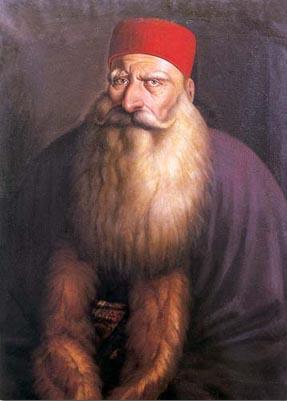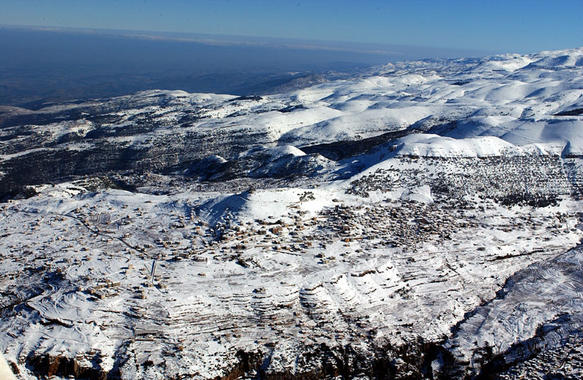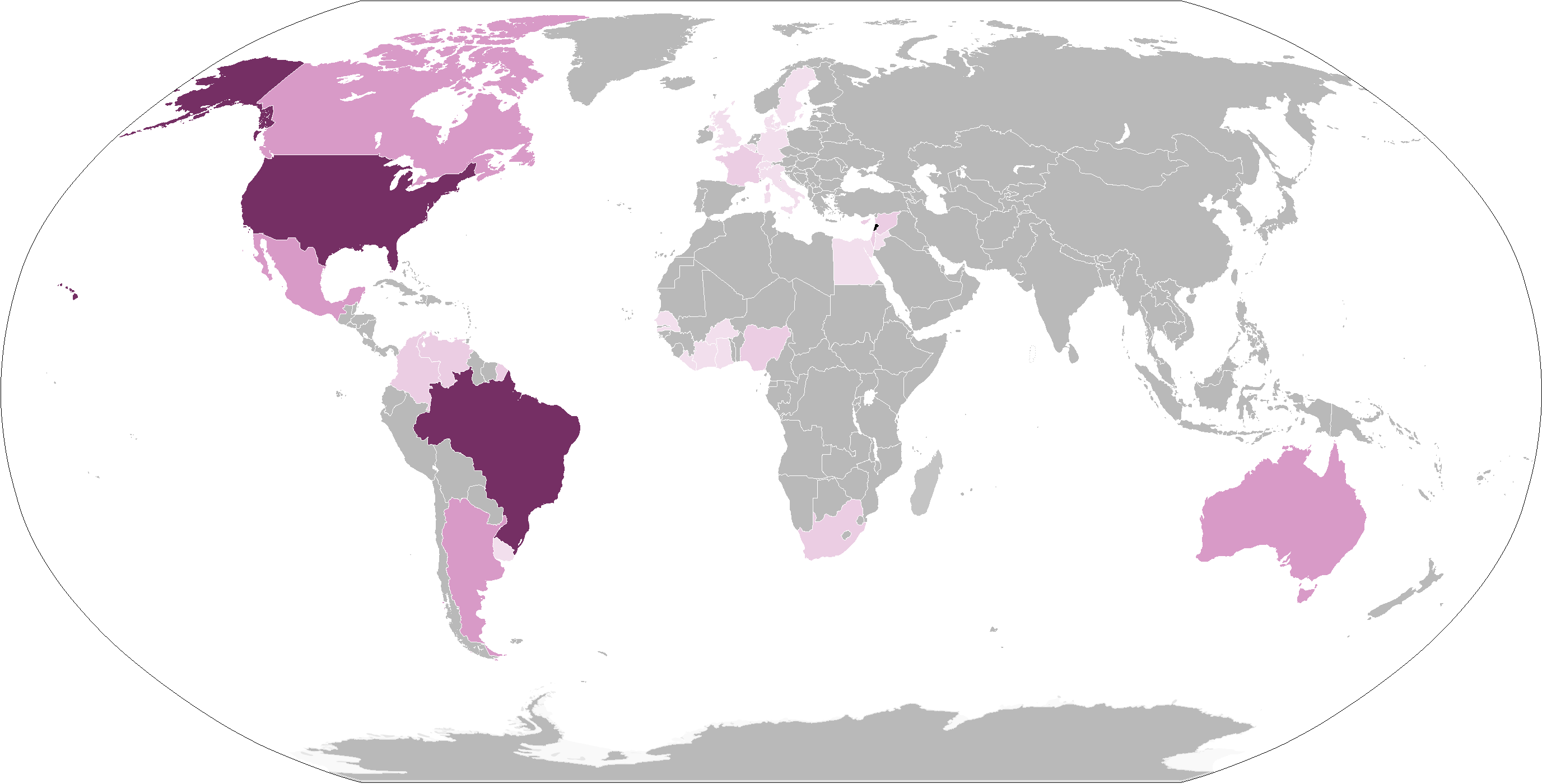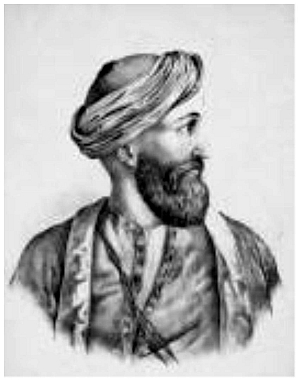|
Sidon Eyalet
The Eyalet of Sidon (; ) was an eyalet (also known as a ''beylerbeylik'') of the Ottoman Empire. In the 19th century, the eyalet extended from the border with Egypt to the Bay of Kisrawan, including parts of modern Israel and Lebanon. Depending on the location of its capital, it was also known as the Eyalet of Safad, Beirut or Acre. Background Ottoman rulers considered creating the province as early as 1585. The districts of Beirut-Sidon and Safed (encompassing much of the Galilee) were united under the rule of Ma'nid emir Fakhr al-Din Ma'n. History Creation The province was briefly created during Fakhr al-Din's exile in 1614–1615, and recreated in 1660. The province continued to be subordinated in some ways, both in fiscal and political matters, to the Damascus province out of which it was created. Despite conflicts in the 1660s, the Ma'n family "played the leading role in the management of the internal affairs of this eyalet until the closing years of the 17th century, ... [...More Info...] [...Related Items...] OR: [Wikipedia] [Google] [Baidu] |
Eyalet
Eyalets (, , ), also known as beylerbeyliks or pashaliks, were the primary administrative divisions of the Ottoman Empire. From 1453 to the beginning of the nineteenth century the Ottoman local government was loosely structured. The empire was at first divided into states called eyalets, presided over by a beylerbey (title equivalent to duke in Turkish and Amir al Umara in Arabic) of three tails (feathers borne on a state officer's ceremonial staff). The grand vizier was responsible for nominating all the high officers of state, both in the capital and the states. Between 1861 and 1866, these eyalets were abolished, and the territory was divided for administrative purposes into vilayets (provinces). The eyalets were subdivided into districts called livas or sanjaks, each of which was under the charge of a pasha of one tail, with the title of mira-lira, or sanjak-bey. These provinces were usually called pashaliks by Europeans. [...More Info...] [...Related Items...] OR: [Wikipedia] [Google] [Baidu] |
Shihab Family
The Shihab dynasty (alternatively spelled Chehab; , ALA-LC: ''al-Shihābiyūn'') is an Arab family whose members served as the paramount tax farmers and emirs of Mount Lebanon from the early 18th to mid-19th century, during Ottoman rule (1517–1918). Before then, the family had been in control of the Wadi al-Taym region, purportedly as early as the 12th century. During early Ottoman rule, they maintained an alliance and marital ties with the Ma'n dynasty, the Chouf-based, paramount Druze emirs and tax farmers of Mount Lebanon. When the last Ma'nid emir died without male progeny in 1697, the chiefs of the Druze in Mount Lebanon appointed the Shihab emir, Bashir, whose mother belonged to the Ma'n, as his successor. Bashir was succeeded by another Shihab emir with a Ma'nid mother, Haydar, after his death. Under Haydar, the Shihabs crushed their main rivals for paramountcy amongst the Druze at the Battle of Ain Dara in 1711, consolidating their dominance of Mount Lebanon throu ... [...More Info...] [...Related Items...] OR: [Wikipedia] [Google] [Baidu] |
Chouf District
Chouf (also spelled Shouf, Shuf or Chuf; ) is a historic region of Lebanon, as well as an administrative district in the governorate ( muhafazat) of Mount Lebanon. Geography Located south-east of Beirut, the region comprises a narrow coastal strip notable for the Christian town of Damour, and the valleys and mountains of the western slopes of Jabal Barouk, the name of the local Mount Lebanon massif, on which the largest forest of Cedars of Lebanon is found. The mountains are high enough to receive snow. History The Emirs of Mount Lebanon resided in Chouf, most notably Druze Emir Fakhr al-Din II, who attained considerable power and autonomy from the Ottoman Empire in the 17th century. He is often referred to as the founder of modern Lebanon although his area of influence and control included parts of Palestine and Syria. Another emir is Bachir Chehab II, who built the palace of Beiteddine during the first half of the 19th century. Deir al Qamar (the monastery of the ... [...More Info...] [...Related Items...] OR: [Wikipedia] [Google] [Baidu] |
Mount Lebanon
Mount Lebanon (, ; , ; ) is a mountain range in Lebanon. It is about long and averages above in elevation, with its peak at . The range provides a typical alpine climate year-round. Mount Lebanon is well-known for its snow-covered mountains, home to surviving Cedrus libani, Lebanese cedar forests and diverse high-altitude flora and fauna. The name Lebanon itself originates from the white, snow-covered tops of this mountain range. Geography The Mount Lebanon range extends along the entire country for about , parallel to the Mediterranean Sea, Mediterranean coast. The highest peak is Qurnat as Sawda', at . The range receives a substantial amount of precipitation, including snow, which averages around in depth.Jin and Krothe. ''Hydrogeology: Proceedings of the 30th International Geological Congress'', p. 170 Lebanon has historically been defined by the mountains, which provided protection for the local population. In Lebanon, changes in scenery are related less to geographical ... [...More Info...] [...Related Items...] OR: [Wikipedia] [Google] [Baidu] |
Kaymakam
Kaymakam, also known by #Names, many other romanizations, was a title used by various officials of the Ottoman Empire, including acting grand viziers, governors of provincial sanjaks, and administrators of district kazas. The title has been retained and is sometimes used without translation for province, provincial or subdistrict governors in various Ottoman successor states, including the Republic of Turkey, Kuwait, Iraq, and Lebanon. Names The title has been romanization, romanized in English language, English since 1645 with extremely numerous spelling variations. The most common present-day forms are kaymakam, kaimakam, and qaimaqam. The modern Turkish language, Turkish term is , from Ottoman Turkish ''kaymakam'' (), from Arabic language, Arabic ''qāʾim maqām'' (), meaning "stand in" or "deputy". History Ottoman Empire In the Ottoman Empire, the title of ''kaymakam'' (known either as ''sadâret kaymakamı'' or as ''kaymakam pasha'') was originally used for the officia ... [...More Info...] [...Related Items...] OR: [Wikipedia] [Google] [Baidu] |
Bashir III Al-Shihab
Prince Bashir Chehab III () was a ruler of the Mount Lebanon Emirate (7th Emir, reigned 1840–1842). After Prince Bashir II was banished from Lebanon, the Ottoman authorities in Asitana (Istanbul) appointed Prince Bashir III from the Chehab family The Shihab dynasty (alternatively spelled Chehab; , ALA-LC: ''al-Shihābiyūn'') is an Arab family whose members served as the paramount tax farmers and emirs of Mount Lebanon from the early 18th to mid-19th century, during Ottoman Empire, Ottoma ... to replace him. Early life Also known as Bashir Qasim al-Chehab, he was born in 1775, the son of Prince Qasim, and nephew of Emir Yusuf Chehab, (5th Emir of Lebanon, reigned 1770–1790). He died in 1860. Legacy The historians of the time commemorated him with the most cynical tales ever told about a Lebanese ruler, no one knows of any significant, rewarding things he did during his rule, and his followers gave him the humiliating nickname "Abou Taheen - أبو طحين" (father of fl ... [...More Info...] [...Related Items...] OR: [Wikipedia] [Google] [Baidu] |
Maronites
Maronites (; ) are a Syriac Christian ethnoreligious group native to the Eastern Mediterranean and the Levant (particularly Lebanon) whose members belong to the Maronite Church. The largest concentration has traditionally resided near Mount Lebanon in modern Lebanon. The Maronite Church is an Eastern Catholic particular church in full communion with the pope and the rest of the Catholic Church. The Maronites derive their name from Saint Maron, (350-410 AD. ), a monk who migrated with his followers from Antioch to the Lebanese Mountains and founded the Maronite church. The spread of Christianity was very slow in the Lebanese region, in the 5th century AD in the highlands they were still pagan. St. Maron sent the apostle Abraham of Cyrrhus known as the "Apostle of Lebanon" with a mandate to convert the pagan inhabitants of Lebanon to Christianity. After their conversion, the inhabitants of the region renamed the Adonis River to the Abrahamic River in honor of the Saint who ... [...More Info...] [...Related Items...] OR: [Wikipedia] [Google] [Baidu] |
Druzes
The Druze ( ; , ' or ', , '), who Endonym and exonym, call themselves al-Muwaḥḥidūn (), are an Arabs, Arab Eastern esotericism, esoteric Religious denomination, religious group from West Asia who adhere to the Druze faith, an Abrahamic religions, Abrahamic, Monotheism, monotheistic, and Religious syncretism, syncretic religion whose main tenets assert the unity of God, reincarnation, and the eternity of the soul. Although the Druze faith developed from Isma'ilism, Druze do not identify as Muslims. They maintain Arabic language and Arabic culture, culture as integral parts of their identity, with Arabic being their primary language. Most Druze religious practices are kept secret, and conversion to their religion is not permitted for outsiders. Interfaith marriages are rare and strongly discouraged. They differentiate between spiritual individuals, known as "uqqāl", who hold the faith's secrets, and secular ones, known as "juhhāl", who focus on worldly matters. Druze be ... [...More Info...] [...Related Items...] OR: [Wikipedia] [Google] [Baidu] |
Ibrahim Pasha Of Egypt
Ibrahim Pasha ( ''Ibrāhīm Bāshā''; 1789 – 10 November 1848) was an Egyptian general and politician; he was the commander of both the Egyptian and Ottoman armies and the eldest son of Muhammad Ali, the Ottoman Wāli and unrecognized Khedive of Egypt and Sudan. He was the second ruler of Egypt from the Muhammad Ali Dynasty and ruled from 20 July 1848 to 10 November 1848. Ibrahim served as a general in the Egyptian army that his father established during his reign, taking his first command of Egyptian forces when he was merely a teenager. In the final year of his life, he was appointed Regent for his still-living father and became the effective ruler of Egypt and Sudan, owing to the latter's ill health. His rule also extended over the other dominions that his father had brought under Egyptian rule, namely Syria, Hejaz, Morea, Thasos, and Crete. Ibrahim pre-deceased his father, dying 10 November 1848, only four months after rising to power. He was succeeded as Regent by his n ... [...More Info...] [...Related Items...] OR: [Wikipedia] [Google] [Baidu] |
Egyptian–Ottoman War (1831–33)
Egyptian–Ottoman War may refer to: * Ottoman–Mamluk War (1485–91) * Ottoman–Mamluk War (1516–17) * Egyptian–Ottoman War (1831–33) * Egyptian–Ottoman War (1839–41) See also * Ottoman–Mamluk War (other) {{Disambig ... [...More Info...] [...Related Items...] OR: [Wikipedia] [Google] [Baidu] |
Siege Of Acre (1799)
The siege of Acre of 1799 was an unsuccessful French siege of the Ottoman city of Acre (now Akko in modern Israel) and was the turning point of Napoleon's invasion of Egypt and Syria, along with the Battle of the Nile. It was Napoleon's third tactical defeat in his career, being defeated at the Second Battle of Bassano and the Battle of Caldiero three years previously during the Italian campaign, and his first major strategic defeat, along with the last time he was defeated in battle for 10 years. As a result of the failed siege, Napoleon retreated two months later and withdrew to Egypt. Background Acre was a site of significant strategic importance due to its commanding position on the route between Egypt and Syria. Bonaparte wanted to capture it following his invasion of Egypt. He hoped to incite a Syrian rebellion against the Ottomans and threaten British India. After the siege of Jaffa, which was followed by two days and nights of massacre and rape by the French fo ... [...More Info...] [...Related Items...] OR: [Wikipedia] [Google] [Baidu] |
Jazzar Pasha
Ahmed Pasha al-Jazzar (, c. 1720–30s7 May 1804) was the Acre-based Bosniak Ottoman governor of Sidon Eyalet from 1776 until his death in 1804 and the simultaneous governor of Damascus Eyalet in 1785–1786, 1790–1795, 1798–1799, and 1803–1804. Having left his native Bosnia as a youth, he began a military career in Egypt in the service of mamluk officials, eventually becoming a chief enforcer for Ali Bey al-Kabir, Egypt's practical ruler. Al-Jazzar fell out with Ali Bey in 1768 after refusing to take part in the assassination of another of his former masters. He ultimately fled to Syria, where he was tasked by the Ottomans with defending Beirut from a joint assault by the Russian Navy and Zahir al-Umar, the Acre-based ruler of northern Palestine. He eventually surrendered and entered Zahir's service before defecting from him. After the Ottomans defeated and killed Zahir, they appointed al-Jazzar as their garrison commander in Acre. He pacified the Galilee and Moun ... [...More Info...] [...Related Items...] OR: [Wikipedia] [Google] [Baidu] |







